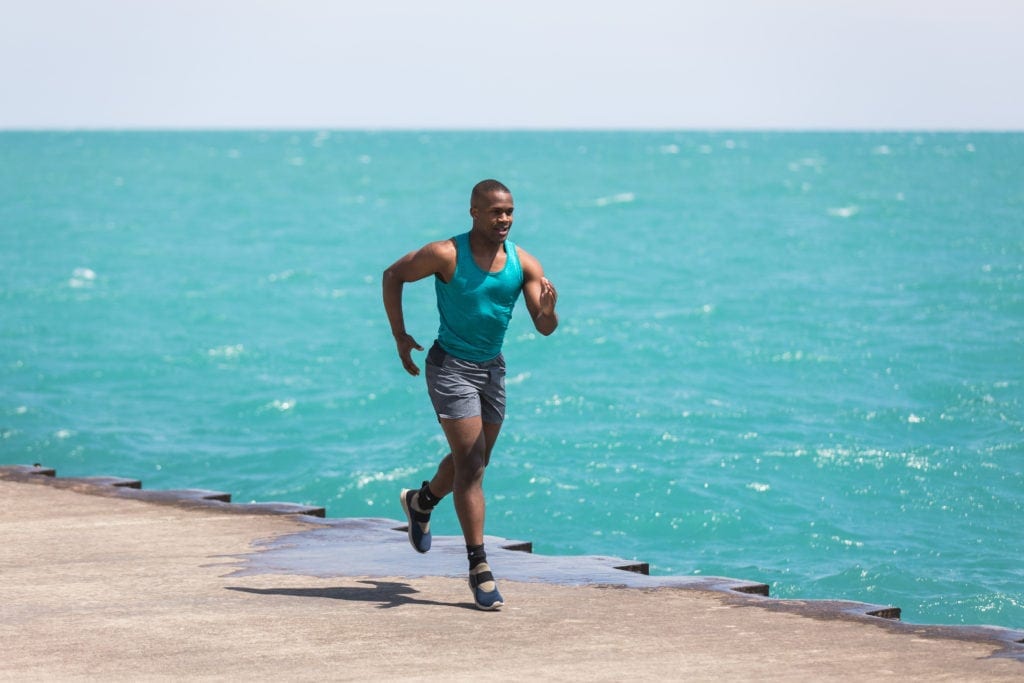5 Unexpected Things That Can Happen on a Run and What to Do About Them
You’re on a run—the sun is out, you’re taking in some breathtaking views and waking that body up—but all of a sudden, you feel like you’ve got to hit the bathroom, stat. Yikes.
It’s times like these where you’re desperately trying to make it through that run, or find somewhere to take a break, to take care of whatever bodily issue you’re dealing with. And, of course, this can bring some anxiety, too!
Unfortunately, sometimes accidents on a run can happen. Between chafing, stomach problems, fatigue, and dehydration, there are plenty of obstacles that can pop up and impair your performance. And, some of them can put your health at risk, if left untreated in the moment.
Here are a few unexpected things that can happen when you’re on a run and how to take care of the problem and keep yourself safe.

Chafing
Itchy and red between your legs? You might be chafing. “You might start chafing while running when moisture/sweat starts to build up between your legs and your thighs rub together or your skin starts rubbing against your sweaty clothes,” says Manning Sumner, RSP Nutrition Athlete and NSPA Certified Private Professional Athlete Strength & Conditioning Coach.
This can cause extreme discomfort, a burning sensation, and if it’s a bad case, it will become very painful. “To prevent it, try and find underwear, biker shorts or leggings that fit tight to the body with no gaps so that the material rubs together instead of your skin,” Sumner suggests. You can also use baby powder to help prevent chafing, so rub it on before heading out.
If you are chafing and need to treat it, clean the area really well, dry it off, and apply a substance like petroleum jelly.
Heat Exhaustion
Heat exhaustion happens when you begin to overheat, which can definitely happen on long or intense runs. “Usually it occurs when running in extreme heat. You will be sweating heavily, experience rapid heart beat and might feel light headed,” Sumner explains.
“My go to move when feeling this way is stop exercising and pour extremely cold water on the back of the neck,” he says. This trick will instantly help you cool down and take a break.
You can prevent this by not running in extreme heat and choosing a cooler hour for that outdoor run. Or if you must go then, make sure you are properly hydrated before you start and wear lightweight clothing to wick away moisture.
Nausea
When you are running, your blood leaves the stomach and starts to go to other parts of your body, and this sometimes can cause nausea. “Eating or drinking too much before a run can also cause nausea,” Sumner explains.
It does not feel good—you’ll feel sick to your stomach, as though you’re about to throw up. Sipping on a Gatorade can help or simply just stopping the run to rest for a while. It will usually subside. And, keep your pre-workout meal to a small snack to not overwhelm the body, and choose less acidic foods and beverages, like coffee, chocolate, and carbonated beverages, which can irritate the stomach lining.
Muscle Cramps
“Cramping when running longer distances and or at higher intensity (sprinting) has been known to cause EAMC exercise-associated muscle cramping. The most common reason for this is dehydration and/or electrolyte imbalances,” says Tony Carvajal, RSP Nutrition Athlete and Certified CrossFit Trainer.
To prevent cramping (EAMC), drink upwards of a gallon to two of water the day prior to the long distance run, which will get the body hydrated and prepped for the activity the following day.
“Day of the run the athlete should consume at least a half gallon of water up to an hour before the run. Also suggested is adding branched chain amino acids (BCAAs) to water fifteen to twenty mins prior the run. This aids with less muscle fatigue, faster recovery, higher levels of other amino acids, and better protein absorption,” he suggests.
And, give your body a surplus of electrolytes. The best way to get a high dosage without feeling full and lethargic is by consuming fruit, Carvajal says. “I suggest eating a banana within an hour of the run. There are many other supplements on the market such as electrolyte gels that the athlete can consume during the run,” he adds.
Stomach Pain
The location you’re most likely to experience pain is in the right upper abdomen, which is also known as a “stitch” or “side stitch.” “This pain is a spasm in the diaphragm due to decreases in oxygen; it may also be due to irritation of the ligaments supporting the liver,” Carvajal says.
To prevent or control this pain, try rhythmic breathing. Inhale for three strides (foot steps), and exhale for two. It is vital to be conscious of the breathing pattern and sustain long smooth breaths. “This is a skill that can be practiced and once mastered will help the athlete control the mind from focusing on pain and lowering the chances for any spasms in the diaphragm,” he explains.
It can also lead to bowel problems. “Runner’s Stomach” occurs when our digestive system experiences a large amount of agitation from the act of running or high-endurance exercise, with a wide range of symptoms of digestive distress mid-run. These include vomiting, stomach cramps, and diarrhea.
To prevent it, avoid eating large meals within two to three hours of a long run or race and avoid eating within 30 minutes of starting the run, Carvajal says. “Instead, sip a sports drink or a banana for that final dose of fuel,” he suggests.
Lastly, avoid heavy, high-fat meals the night before and the day of a long run or race. Choose light, lower-fiber foods, such as bananas, plain oatmeal, or whole-wheat toast.
Knowing your body, recognizing its pain, and treating it will help keep you running more often and longer.












